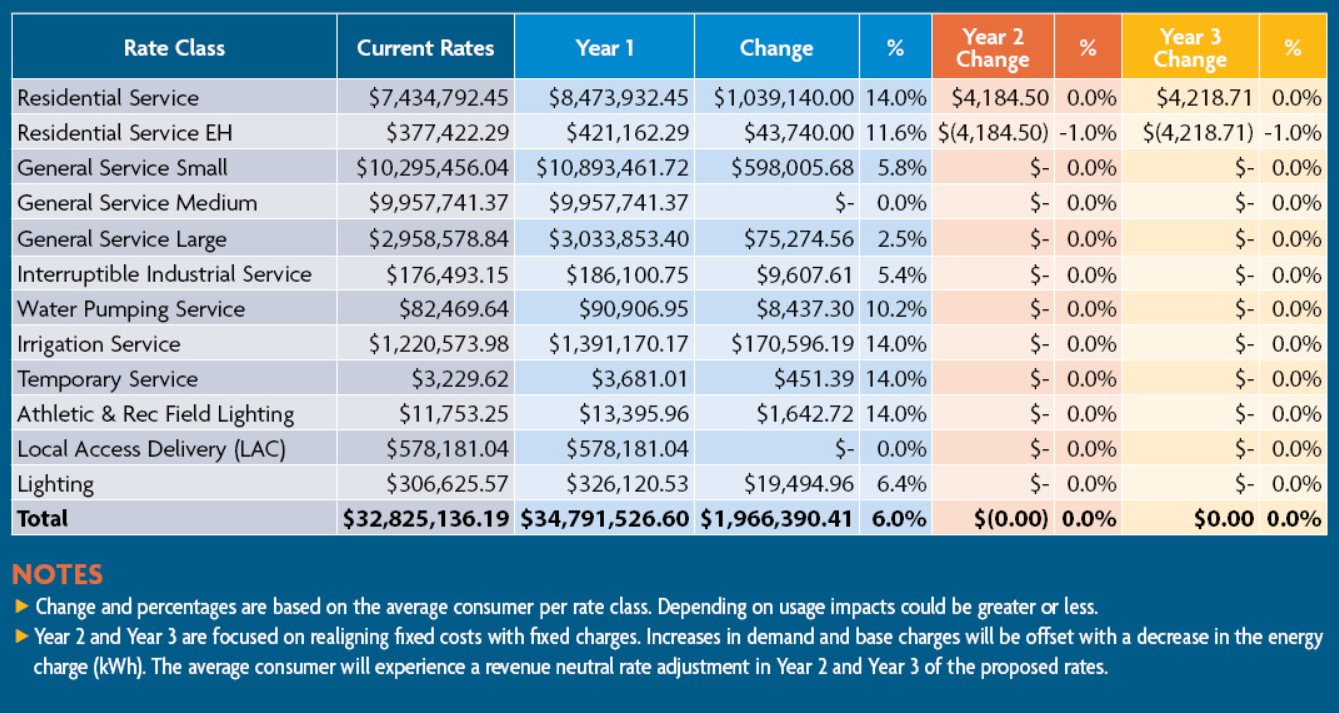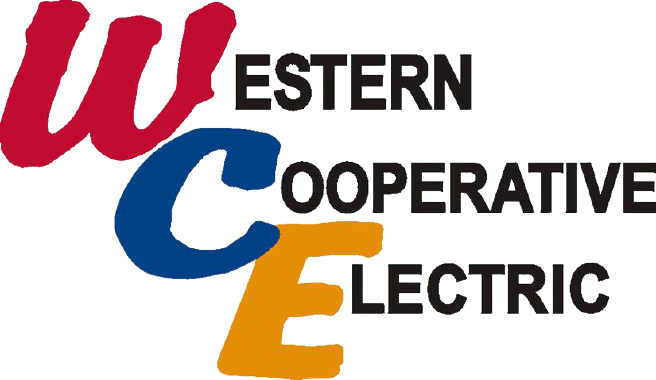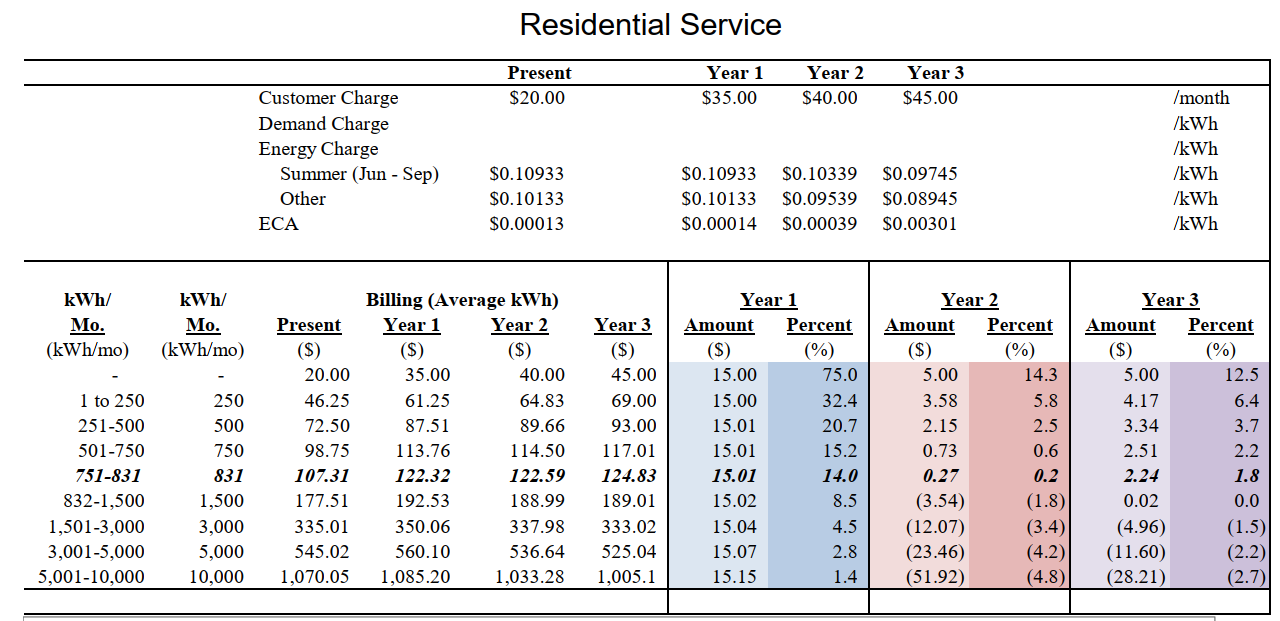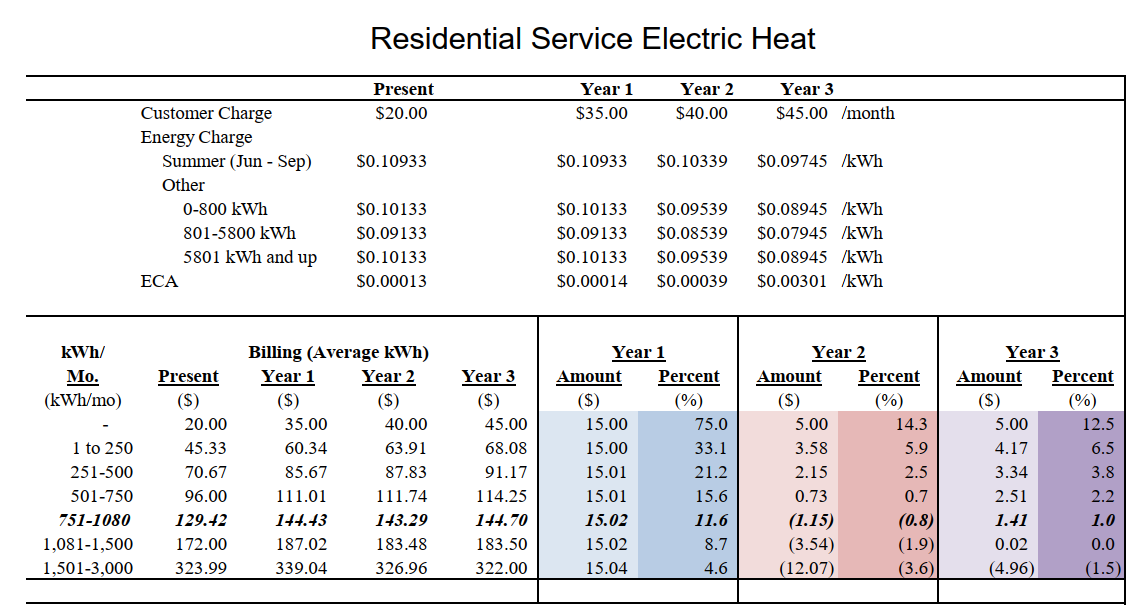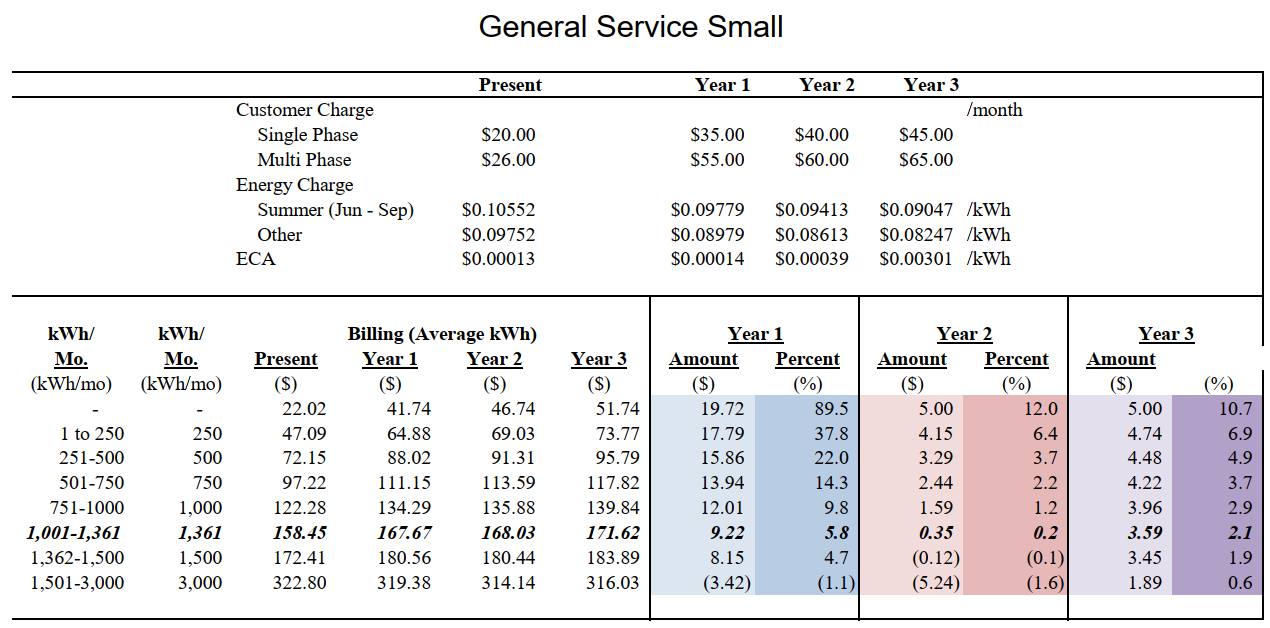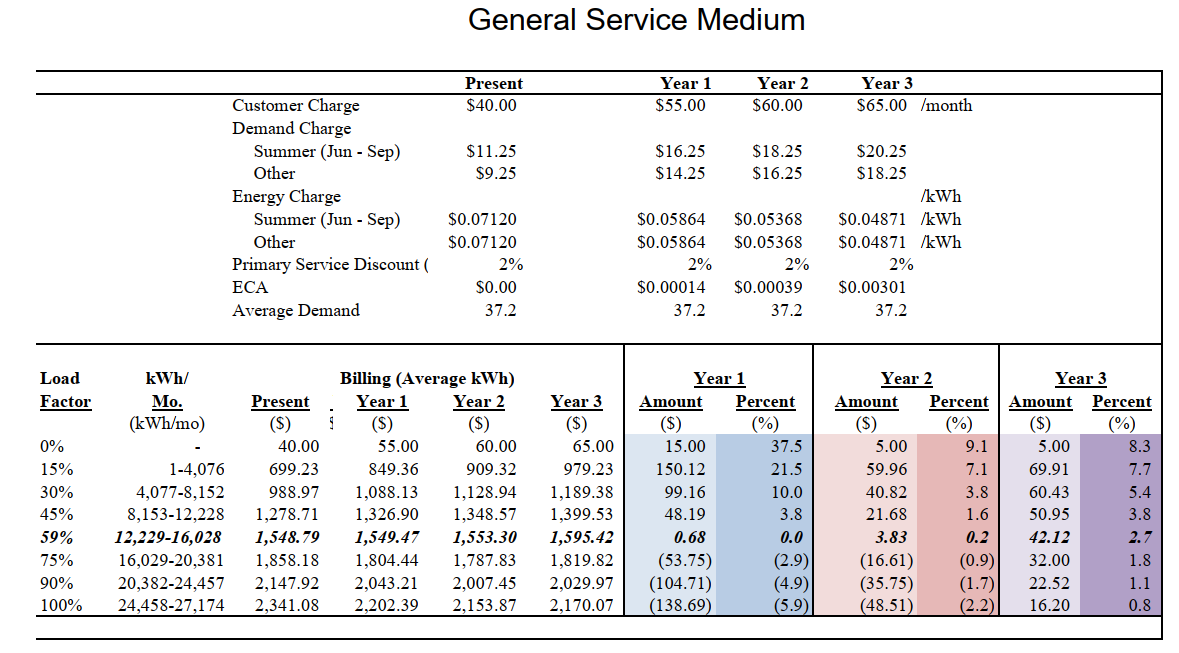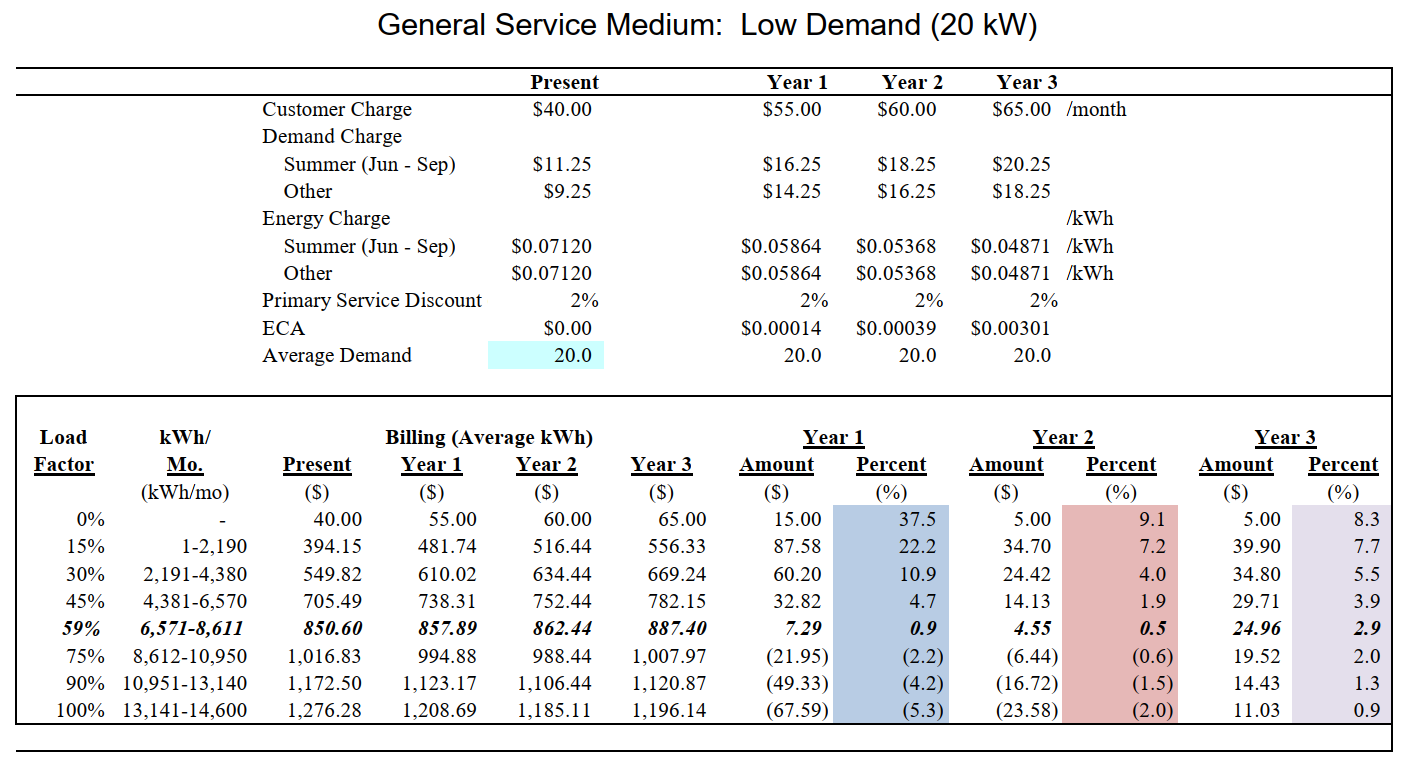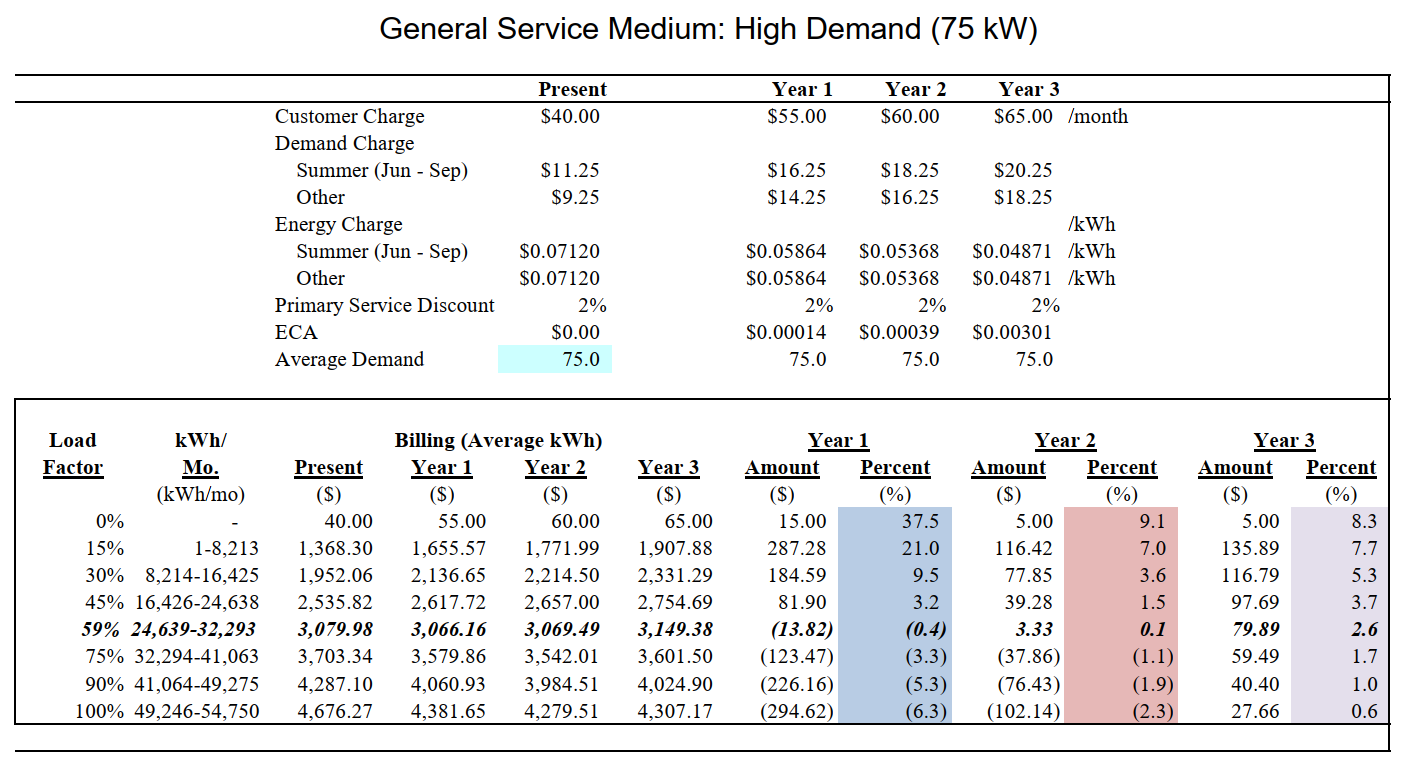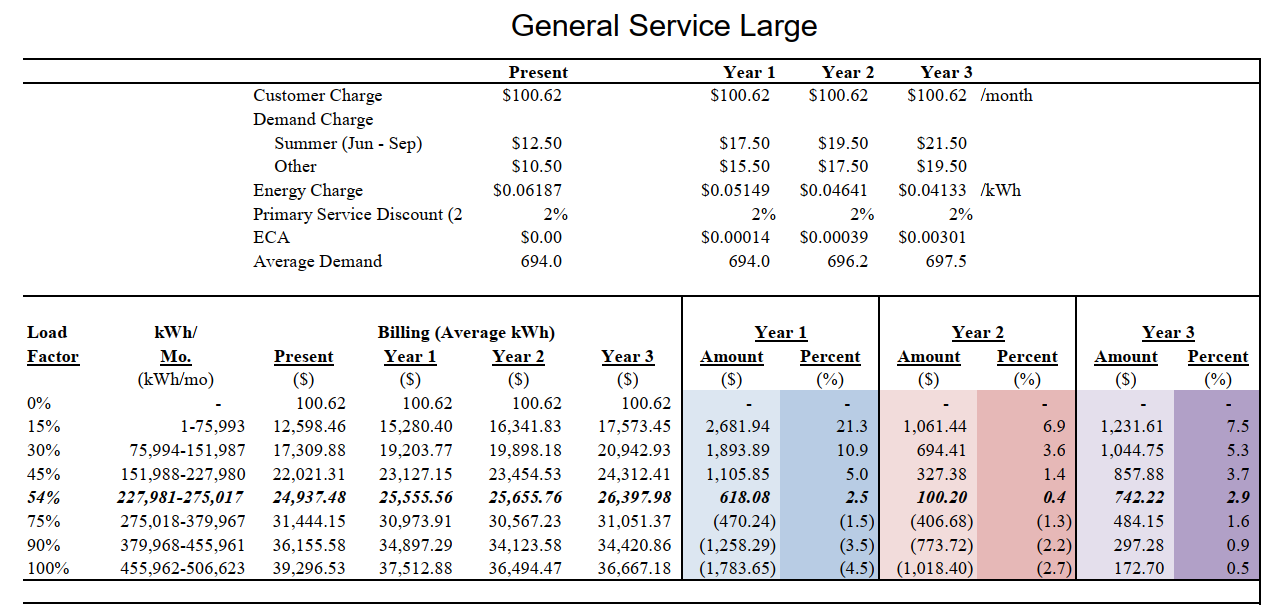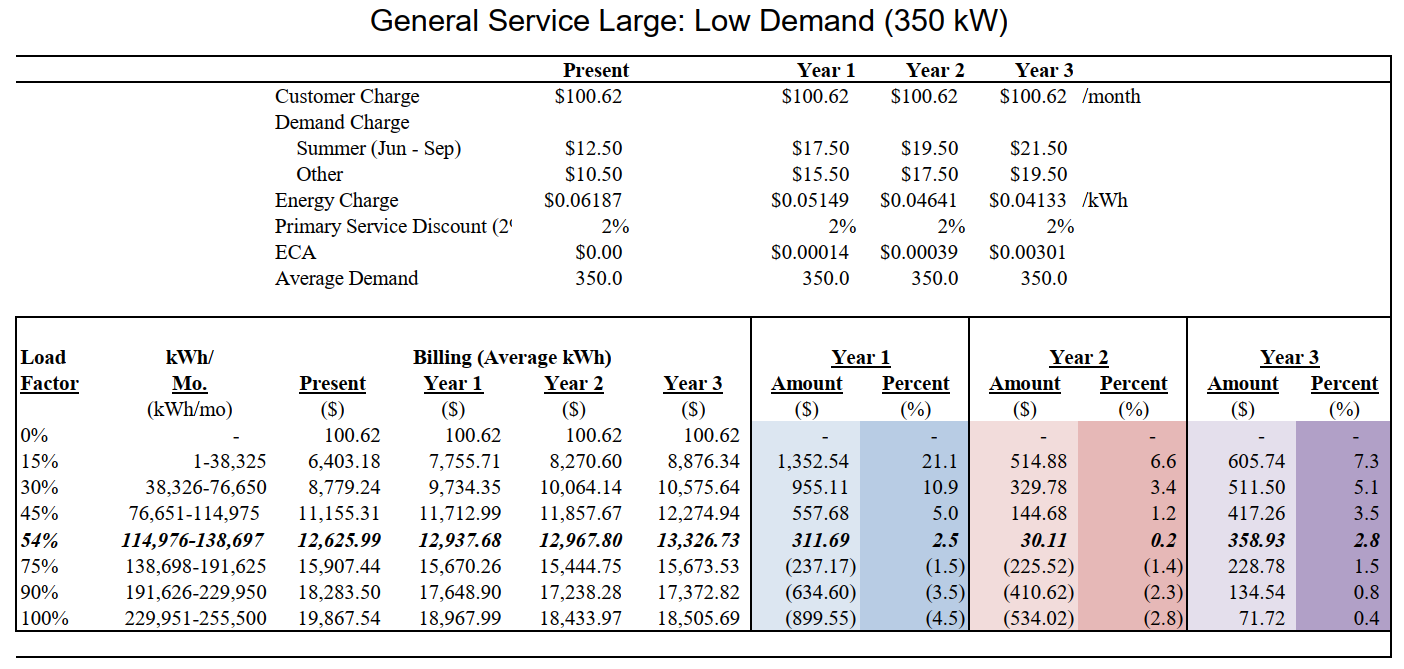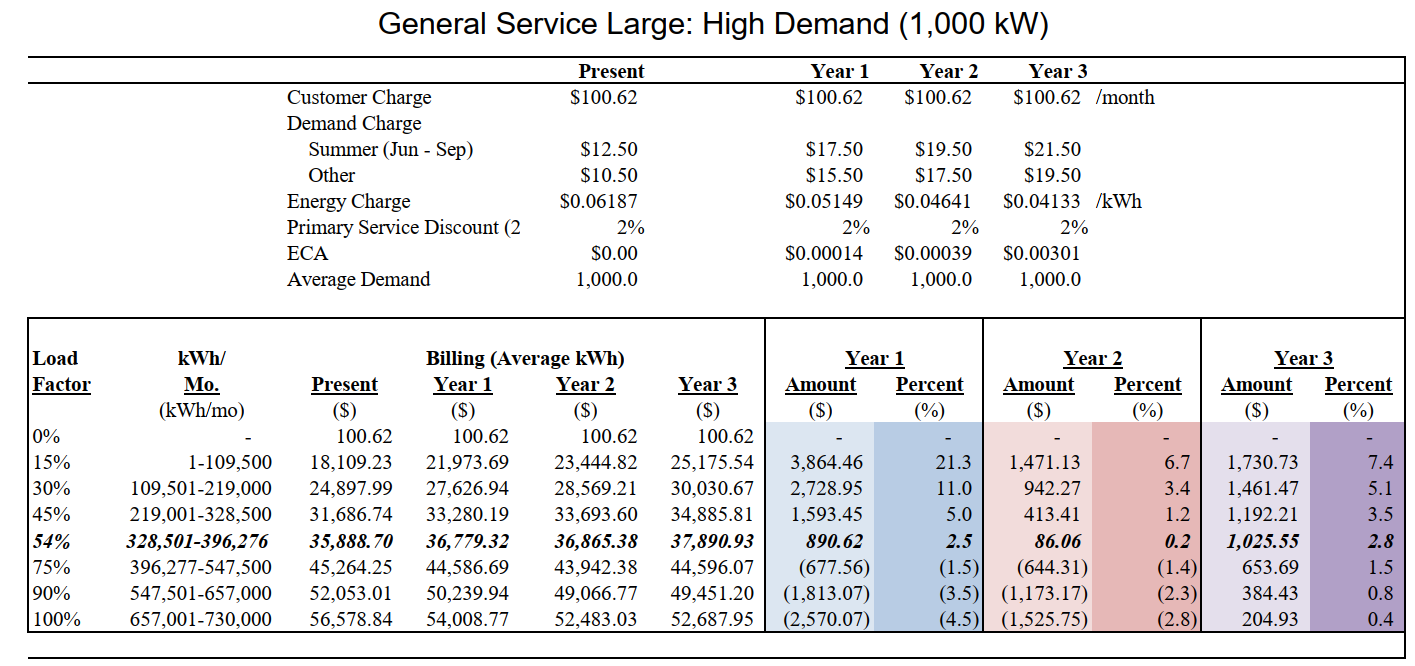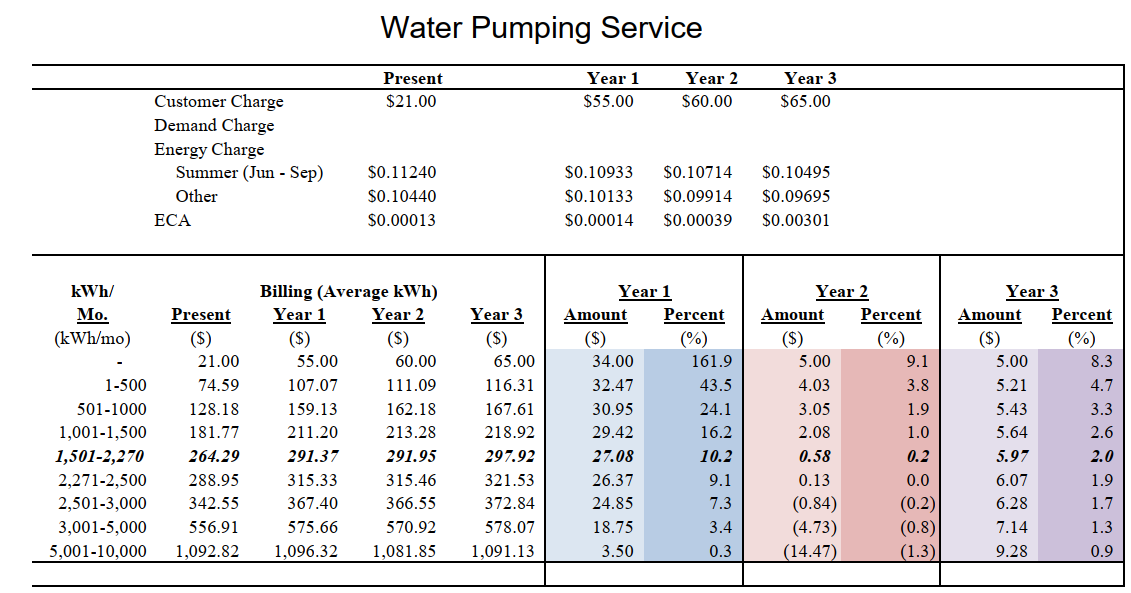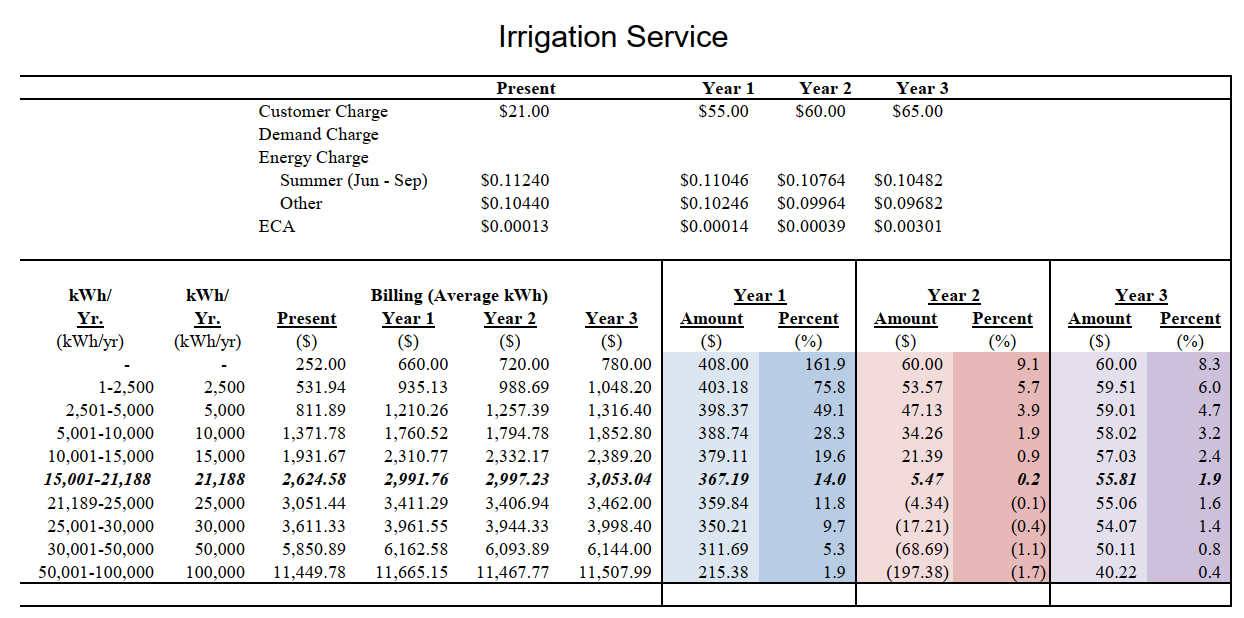Outages: 800-456-6720 | Office: 785-743-5561
New Rate Proposal
My Resources > FAQs > New Rate Proposal

Rate Change Proposal FAQs
Proposed Rate Redesign
Power Systems Engineering (PSE), an independent rate consultant, recently completed Western Cooperative's Cost-of-Service Study. The rate study calculated how much revenue is required to operate successfully, then identified how much each rate class is responsible for to meet the revenue requirement. Finally, those amounts are compared to the revenues that are currently being collected from each rate class to determine where deficiencies have emerged. This provides the information needed for the Board of Trustees to redesign the rates to ensure adequate and fair revenue collection.

Required Revenue
The first step in the cost of service study is determining the total amount of revenue Western needs to operate. PSE’s initial models showed a $2.5 million deficit for 2023 and beyond. The Western Board of Trustees lengthened the patronage retirement cycle and reduced expenses to lower the required revenue. The decisions of the board reduced the shortfall to $1.9 million.
To reach the amount of revenue needed to maintain service levels, Western requires an average 6% rate increase among all rate classes. However, depending on your specific rate classification and energy consumption, your bill could experience a higher or lower impact. The board takes its duty to carefully review and set rates fairly because, after all, they are Western members, pay the same rates, and face the same cost pressures as all our members.
Cost of Service Study
While the required revenue study determines the total amount it costs to operate the cooperative, the cost-of-service study examines how and why costs are incurred. By analyzing the cost-of-service, we can fairly and appropriately assign costs to each rate class using proper rate-making principles.
Several factors drive cooperative expenses. For example, there are costs associated with power generation and usage. There are also costs incurred with the transmission of power from the power plants to our substations. Lastly, there are costs incurred in distributing the power to members. Distribution costs comprise Western’s expenses for poles, wires, transformers, trucks, facilities, substation maintenance, and line repairs. The cost-of-service analyzes these costs and assigns them to the appropriate categories.
All of these costs are also analyzed by function. Each month your energy bill is split between fixed charges (customer charge and/ or demand charges) and variable charges (energy charge/ kWh).
The cost-of-service study has revealed an imbalance between fixed and variable charges. The customer and demand charges include the expenses related to the facilities directly connected to your property, such as wires, meters, transformers, accounting, transportation, and maintenance. As we go into the rate design phase, we know there will be an increase and realignment of charges to create a more fair balance for all ratepayers.
Average Projected Bill Impacts

Base Rate Revenue By Rate Class
